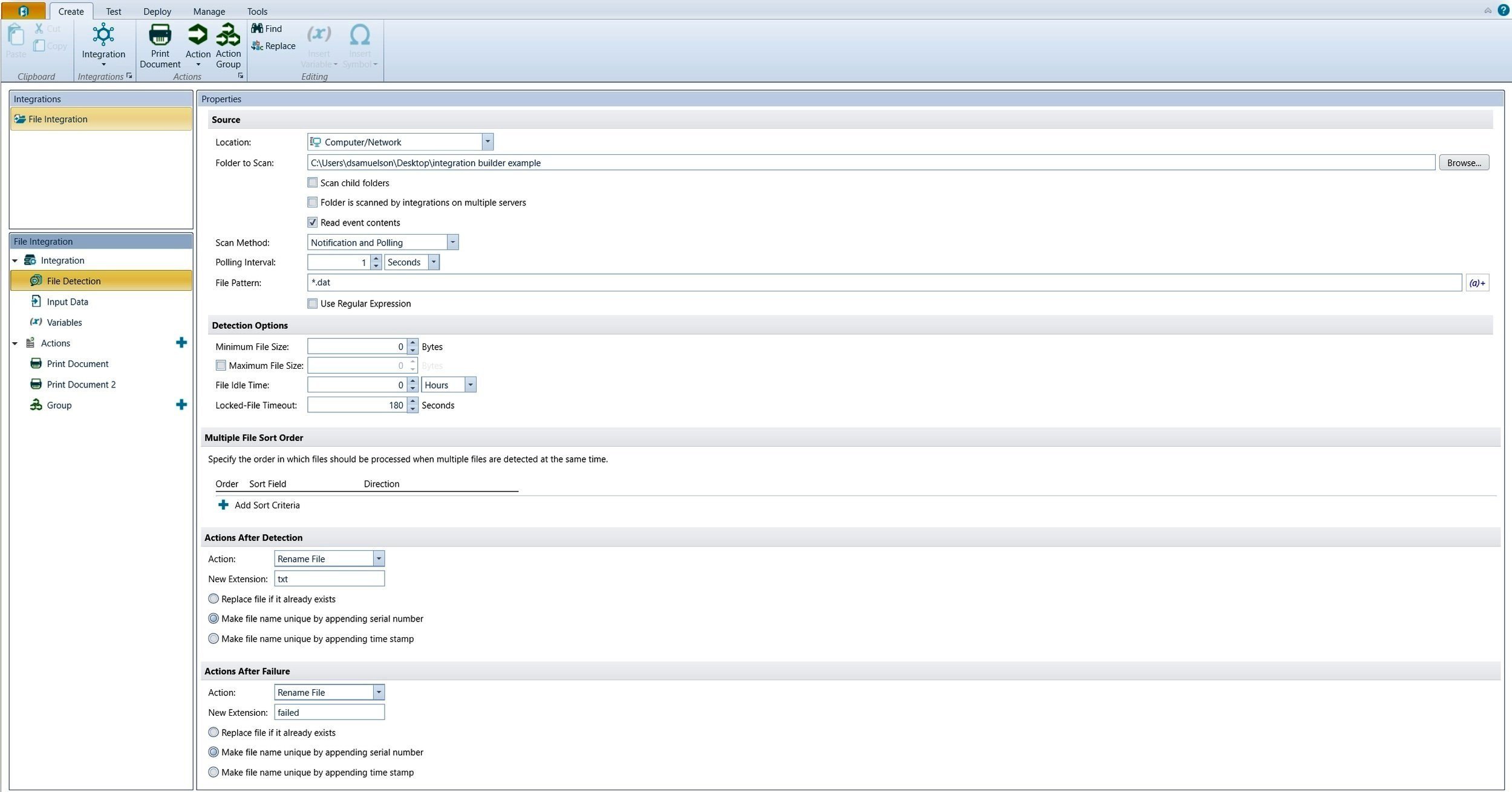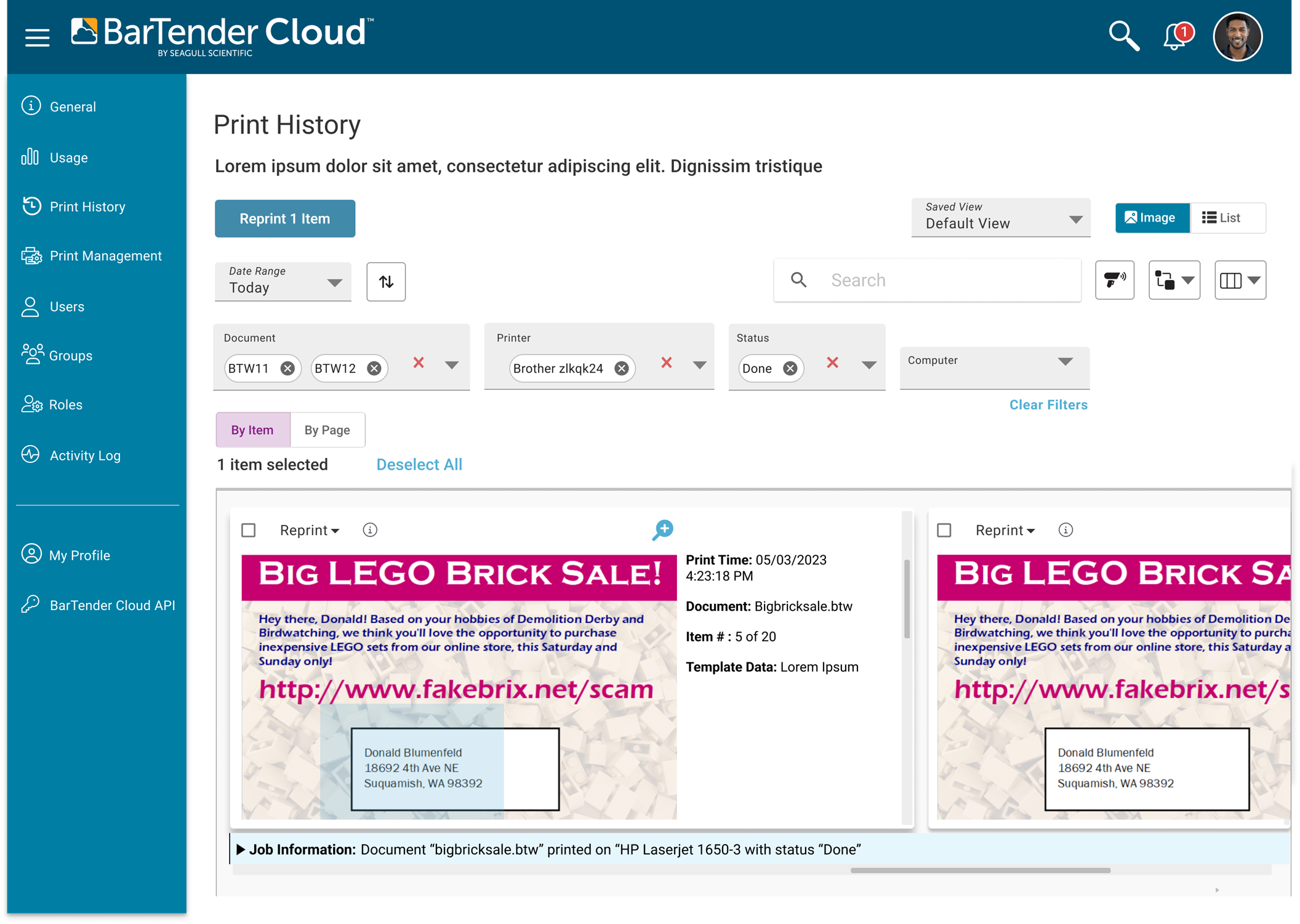Seagull Scientific has been making “BarTender” software for over 30 years.
While the traditional boxed software served its purpose well, the transition to the Cloud required a fresh approach and experiential overhaul. "BarTender” needed to join the future of user experience.
BarTender had critical UX problems in the following areas:
Outdated old-school UI
Siloed teams generating UI without oversight or communication
The use of varied tech stacks resulting in varying codes and disparate visual elements
Consideration and understanding of the User Experience
The Legacy Box Product
Entering a tech-debt-heavy environment where UX was new and engineers handled UI, my goal was to champion the user and introduce modern UX practices to evolve BarTender into a more intuitive, user-centered product.
Key Challenges and Constraints.
Scepticism about the value of UX
Integration of new and old UI patterns.. how to drive design forward while integrating what was already launched
Understanding our users: Persona’s were lacking, and research was non-existent
Development had one key stakeholder, the CTO, that made all final product and priority decision
Where to begin? Thinking towards The Cloud.
Personas
Who were BarTender’s users?
When I joined the team, very little research had been done to understand our core users. Most assumptions painted them as tech-savvy engineers — mirroring the people who had been designing BarTender for years. To create truly empathetic, user-centered designs, I needed to uncover who our customers actually were.
This presented a unique challenge: because Seagull sells primarily through resellers, direct access to end users was limited and often gatekept by stakeholders. To work around this, I conducted interviews with support, customer care, and sales staff — the people with the deepest, most hands-on understanding of our customers’ pain points and workflows.
From these insights, I developed a set of ad hoc personas that reflected the full spectrum of our users — not just the advanced technical experts, but also small business owners, designers, and print operators. These personas became the foundation for aligning the team around user needs and shifting the culture toward more human-centered design.

Now that I had a sense of our users, and IA, It was time to establish a baseline design kit with an emphasis on accessibility and branding.
With its consistent and agnostic attributes, I chose Material Design as the design language for our Kit Standard. Over the course of a year, I developed a style guide in Figma to provide a cohesive visual guide for the future of the product.
Style Guide
Product Evolution
With the new Design Guide and Component Library in place, I was able to begin shaping the Cloud UI with a stronger sense of cohesion and purpose. Previously, the interface felt fragmented — a collection of disconnected elements built independently by different teams over time. By leveraging our unified design system, I could create screens that felt consistent, modern, and intuitive, aligning both visually and functionally across the product ecosystem.
This foundation allowed me to focus on the user experience itself — simplifying complex workflows, clarifying navigation, and reducing visual noise. The goal was to give users an interface that felt seamless and approachable, even when managing complex, data-heavy tasks.
From here, I moved into wireframing and prototyping, exploring layout structures and interaction patterns that balanced usability with scalability for future feature growth.
The developers could now code elements to apply and update globally, a giant leap forward for feature release velocity.
MVP Wireframes
Responsive Design
With the introduction of the BarTender Cloud product, our legacy Windows software needed to evolve into a fully responsive, platform-agnostic experience. This transition required rethinking how our product functioned across devices — from desktop to tablet to mobile — ensuring consistency without compromising functionality.
To support this shift, I developed detailed responsive design guidelines that defined breakpoint behavior, adaptive layouts, and interaction patterns for complex SaaS components such as query builders, data tables, and modal workflows. These specifications provided developers with a clear framework for maintaining usability and performance across varying screen sizes.
At the same time, we were updating an early-stage BarTender mobile app, which required updates to align with our newly established responsive standards. I helped define its interaction model and visual hierarchy to ensure a seamless experience between the Cloud platform and the mobile app — now live in the App Store — creating a unified ecosystem for our users across devices.
Handset Wireframes
Mobile Only: Refining an App
In addition to the responsive Cloud product, BarTender released a companion mobile app for distribution through the App Store and Google Play. However, the initial release was rushed to market, resulting in usability challenges, unclear flows, and inconsistencies with established mobile interaction patterns.
Below are examples comparing the original beta version and the refined UI following a dedicated UX pass. This redesign focused on streamlining navigation, resolving dead ends, and aligning behaviors with modern mobile standards to create a more intuitive and cohesive experience for users.
Original Beta Version of the APP
Updated APP
Developing a UX Resource Library
Educating Developers on the Importance of UX
Once the style guide was launched, it quickly became clear that Engineering needed deeper support and documentation.
Key questions began to surface:
What animations and behaviors apply to interactive elements?
When should specific patterns be used?
How do responsive breakpoints apply?
What are the detailed specs for each component and layout?
While I continued to offer direct UX support, it was clear we needed a centralized resource library—a scalable knowledge base where engineers could access clear, consistent design guidance and reach out for deeper collaboration when needed.
The Style Guide and Design System put in place works.
An initial version of BarTender Cloud has launched and is gaining traction on the market. Customers are positively responding to the new product’s look, feel, and functionality.
Also, UX’s collaboration has enriched the company and the product, as this testimonial shows.
Supporting Quantifiable Metrics:
30% increase in feature release velocity
80% continuity increase in new development
Customer usability poll satisfaction rating increased to 4 out of 5 stars from the legacy product (2 out of 5 stars)
“Dawn has been a great person to work with. She pioneered a lot of UX guidelines for us and worked patiently with development teams that hadn’t had formal UX discipline applied before. She was always kind, thoughtful, and especially detail-oriented. She was very passionate about her work, and the result of her efforts was instrumental in making our software better.”
Protoyping the Future
Future Design and Navigation
By the time I transitioned out, the UX team had gained the trust and charter to modernize BarTender’s navigation and visual system. I’m proud of the groundwork we laid—establishing design standards, advocating for users, and shifting the culture toward design-driven thinking. I look forward to seeing the team’s refined vision come to life in future releases.
























